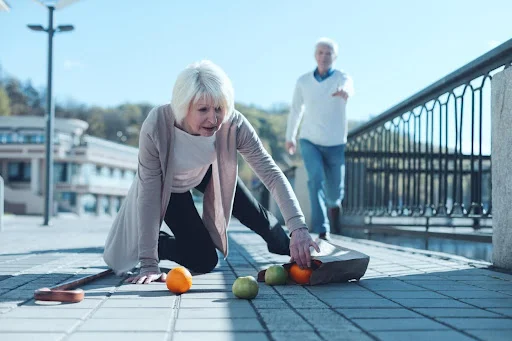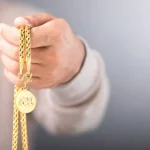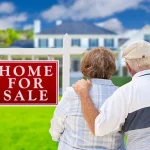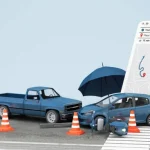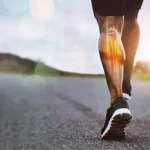Slipping in Everyday Places is more common than many realize, and some locations hold hidden threats that put people at risk each day. From entrances with slick surfaces to stairways and sidewalks with uneven ground, accidents in these spots can quickly become a pain both physically and financially if someone gets hurt due to unsafe conditions. Slipping can happen to anyone, whether they’re moving through a busy shopping center or simply stepping out onto a wet walkway.
Knowing who may be responsible when such incidents occur is just as important as recognizing where mishaps are likely. Responsibility for injuries often depends on whether the property owner took reasonable steps to maintain safety, which can become the center of a legal claim. Those injured in certain areas sometimes seek help from slip-and-fall lawyers to pursue compensation for medical expenses and other losses. Get help when it matters.
The Most Dangerous Everyday Places for Slip and Fall Accidents
Floor surfaces in businesses, parking areas, and residential settings can all present safety risks. Issues such as spills, uneven pavement, and inadequate lighting often cause incidents that result in injuries ranging from back pain to traumatic brain injuries.
Slippery Surfaces in Businesses and Restaurants
Wet or greasy flooring is a leading contributor to incidents in commercial properties and eateries. Accidents are often the result of mopped tiles, spilled food, or leaking freezers. Hard surfaces like polished concrete in grocery stores, fast-food locations, and coffee shops become hazardous if not maintained.
High-risk areas:
- Entryways during rainy weather
- Restroom floors
- Buffet lines
Unsafe flooring can lead to head injuries, sprains, and fractures when people lose their balance. Employers are required to address hazardous conditions, such as poor lighting or loose mats, and they are typically responsible if patrons or workers are harmed due to inadequate safety measures.
Hazards in Parking Lots and Outdoor Areas
Outdoor locations like parking garages, walkways, and lot surfaces develop risks through weather-related factors or neglect. Uneven pavement, cracks, potholes, and faded markings often result in falls and injuries. Water accumulation and ice can make otherwise safe zones dangerous, especially during colder months.
Dim lighting in parking facilities makes it difficult to spot hazardous surfaces. Damaged curbs and speed bumps may also increase the risk of falling. Individuals may sustain back pain or even traumatic brain injuries if they fall in these locations.
Residential Properties and Common Areas
Home environments, including apartments and condo complexes, are not free from risks. Slippery bathroom tiles, cluttered hallways, or poorly maintained staircases frequently result in mishaps. Common areas like shared laundry rooms may have water leaks or other dangerous conditions.
Landlords have a responsibility to keep shared parts of the property free from obvious dangers, such as loose carpeting or broken steps. Injuries like head trauma, broken bones, and back pain are regularly reported after these types of accidents.
Who’s Liable and What to Do After a Slip and Fall
Everyday spaces like stores, sidewalks, and public buildings present genuine risks for slip-and-fall incidents. After an accident, knowing who may be responsible and what actions to take can make a significant difference in securing a fair outcome Everyday Places.
Expand your understanding with these must-read topics we’ve curated for you.
Understanding Premises Liability and Legal Duty
Premises liability governs situations where a slip and fall occurs on another party’s property. Under this principle, owners, management companies, or occupiers are held responsible if they fail to maintain a safe environment for those whom the law protects, such as invitees and licensees.
Duty of care is central here. Owners have a legal obligation to address known hazards like wet floors, uneven surfaces, or poor lighting. The level of responsibility depends on the visitor’s status. For instance, someone entering with permission (invitee) is owed more protection than a trespasser.
Warning signs, regular inspections, and swift repairs are standard reasonable care measures. If these are lacking and harm results, legal liability may apply Everyday Places.
Negligence and the Role of Property Owners
Negligence plays a key part after a slip and fall. A property owner, business operator, or even a maintenance company can be responsible if they knew or should have known about a danger but did not take proper action. Negligence is typically established by showing failure to fix issues or warn individuals.
Verification of negligence usually requires proof that the hazard existed long enough that corrective action was reasonable. In some cases, comparative negligence matters. If the injured person’s actions contributed to the accident, their compensation may be reduced proportionally.
Entities like cleaning firms or outside contractors may share responsibility if their actions create or fail to correct treacherous conditions, as covered in liability for service providers. Pictures, witness statements, and maintenance records often play an essential role in these disputes Everyday Places.
Filing a Personal Injury Claim and Securing Compensation
Initiating an injury claim involves documenting the incident, notifying the property owner, and collecting supporting evidence, such as photographs and medical evaluations. Reporting the incident promptly improves the integrity of the claim.
Many people consult a personal injury attorney to guide them through the legal process and manage dealings with insurers. Compensation may cover medical bills, lost wages, pain and suffering, and, if recklessness is proven, punitive damages.
Negotiating with insurance companies and responsible parties can be challenging. Legal representation improves the chances of a fair settlement in a personal injury lawsuit. Timeliness is crucial, as waiting can jeopardize legal rights or reduce available compensation.
You’ll find even more guides and resources on 2A Magazine.

